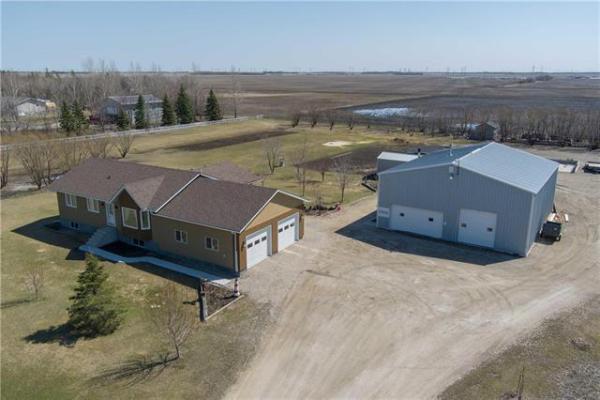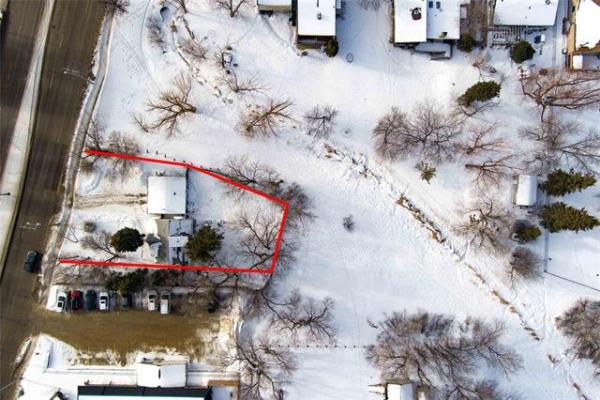QUESTION: Our house is a 700-square-foot bungalow built in 1973 in St. Vital on a number of concrete pillars. A crawlspace surrounds an approximately 7x7-foot "partial basement" with concrete block walls that rise about four to five feet high. The crawlspace begins at this height and rises another two feet higher or so.
There is also some wooden flat level space for storage above the block walls immediately before drywall, insulation and a vapour barrier separates the basement from the crawl space. Except for a small, open space where the furnace exhaust pipe exits into the crawl space, the rest of the crawlspace is sealed.
The crawlspace has only one vent in a concrete skirting around the foundation. A prominent basement company indicated that crawl space vents should be sealed because they let humid air into the house. Apparently, the only time that it does work to use a vent to dry a crawlspace may be in winter, or if the temperature is 21 degrees C and the relative humidity no more than 45 per cent year-round.
To begin a strategy to address a moisture issue and the possibility of radon in the exposed dirt floor, I've decided to separate the house from the dirt floor with a moisture barrier. I understand that, as part of this, I need to add soil next to the house to create a swale or a slope away from the foundation for precipitation run-off. However, this will cover up the crawlspace vent, because it is currently very low to the ground.
Should I keep the vent in the crawlspace but make a new one higher, or seal it, create the swale or downward slope with soil and dehumidify the crawl space, if necessary, as part of a moisture-reduction strategy?
Jonathan Neufeld and Brigitte Reimer
ANSWER: Crawlspaces are often a problem because of the high chance of moisture intrusion. This is due to the open soil and the location of the crawlspace, as you have indicated. You are being very pro-active in your attempts to keep this area dry and prevent radon intrusion, but you should also attempt to include other alterations in your plans.
Air movement is one of the main things that allows moisture to evaporate from damp air. Allowing an ongoing source of warm fresh air into the crawlspace, even if does have high relative humidity, will help prevent stale, damp air from creating a problem. Unfortunately, having a single vent may be next to useless, as this does not allow much air movement.
To answer your main question, you should definitely move the vent higher and install at least one more additional vent, or small window, at each side of the crawlspace. Adding these vents will help to allow wind-assisted air to enter and exit the confined space, removing damp, stale air that is likely to condense in the cool environment.
Building up the soil outside the concrete grade beam that encloses your crawlspace may help prevent excessive moisture intrusion, but that should be done in conjunction with interior grading as well. If the soil in the crawlspace is significantly lower than the soil outside the home, you may always have a problem with water due to what I call the "swimming pool" effect. Because our wonderful clay soil can only absorb a limited amount of precipitation before it becomes saturated, any depressed area can easily become a puddle during heavy rains or spring melt. You can see this phenomenon on any construction site or grain field after a good rain.
The solution is to bring in additional soil or other landscaping material to raise the level inside the crawlspace above the exterior grade. Sand or fine stone may be a better choice than topsoil and may not require removal of the air/vapour barrier you have installed on the dirt floor if it is not too low. This may be quite difficult due to the lack of an access hatch but one could be installed in your insulated walls, or after they are removed, to allow pails of fill to be carried into the crawlspace.
The final item to address is the configuration of the crawlspace, relative to the rest of the basement.
You would be much better off to remove these short walls and open the crawlspace to incorporate it with the conditioned space of the part basement. This way, you will not be creating an enclosed, separate, cooler area where condensation is highly likely. If the inside of the concrete perimeter grade beam is not well insulated and air-sealed, moisture issues will be a certainty. By removing those walls, you will increase air movement and allow the heat from the part-basement to warm the crawlspace in the winter, preventing condensation.
It is critical that you keep the dirt floor sealed well and attach this to a similar air/vapour barrier installed over the inside of the grade beam and block foundation walls. That can be done after installation of rigid extruded polystyrene sheathing, or equivalent, on both the foundation walls and grade beams to prevent heat loss.
If you're successful in completing all of these items, and create a single, well insulated and sealed conditioned space rather than a separated part-basement and crawlspace, the question about the vent may be moot. There may be not be as much need to vent the entire basement, if you have central air conditioning, but installing a few small windows or large vents, which can be closed or covered for the heating season, is never a bad idea.
Ari Marantz is the owner of Trained Eye Home Inspection Ltd. and the President of the Canadian Association of Home & Property Inspectors - Manitoba (www.cahpi.mb.ca). Questions can be e-mailed to Ari can be reached at (204) 291-5358 or check out his website at www.trainedeye.ca.
trainedeye@iname.com



